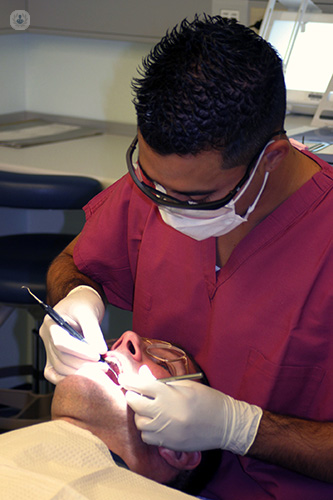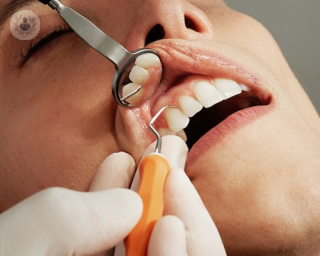Periodontitis
Dr Crystal Marruganti - Dentistry
Created on: 10-28-2015
Updated on: 12-21-2023
Edited by: Carlota Pano
What is periodontitis?
Periodontitis can occur in a more advanced stage of periodontal disease, otherwise known as gum disease. Periodontitis occurs when the inflammation of the gums extends to the ligaments and bones that support the teeth, leading to the teeth loosening or falling out.

What are the symptoms?
The symptoms of periodontitis are very similar to those of gingivitis:
- the gums are red or purple, instead of their natural pink colour
- the gums bleed during brushing, or afterwards
- bad breath
- loose teeth
- pain when touching the gums
What causes periodontitis?
Gingivitis can progress to periodontitis if it is not treated properly. Gingivitis is treatable and reversible, whereas periodontitis is a more serious condition, as it can lead to tooth and bone loss, which are irreversible. There is also a genetic component to periodontitis, and some people are more susceptible to the disease than others.
If you smoke, or have diabetes, then the risk of periodontitis is also higher.
Can periodontitis be prevented?
Proper dental hygiene is the best way to prevent periodontitis. In fact, it is important to maintain good dental hygiene habits to prevent gingivitis in the first place, which is the periodontal disease that can trigger periodontitis.
The prevention and proper treatment of gingivitis can prevent periodontitis.
What is the treatment of periodontitis?
The first step is to reduce inflammation and remove plaque affixed to the teeth and gums. To do this, complete professional dental hygiene must be performed, which should be repeated once every three months or following the recommendations of your dentist to prevent plaque from accumulating again. The patient should also maintain thorough brushing and flossing habits.
The treatment of periodontitis may also include surgery to remove infection from the gums and to rebuild the tooth supports. The operation will consist of opening the gums to clean them deeply, provide support to the teeth that are loose and even extract a severely affected tooth to prevent the problem from spreading to the other teeth.












